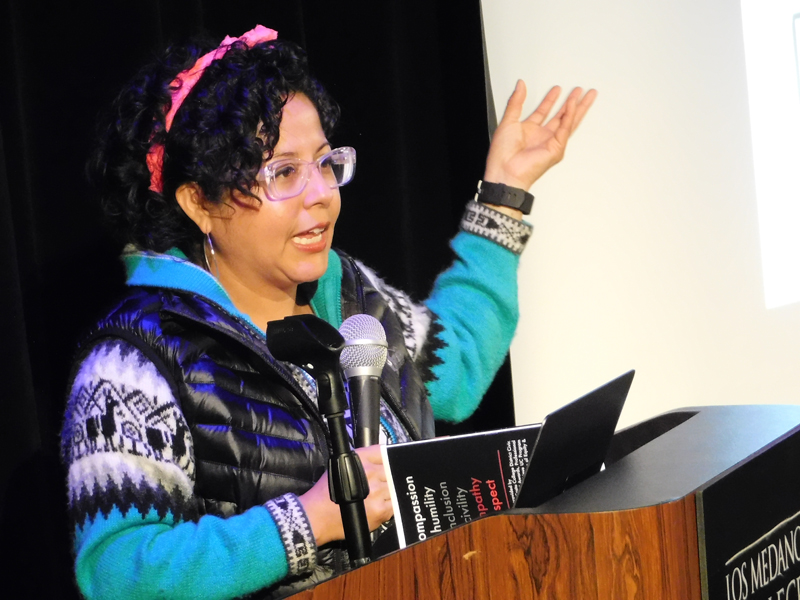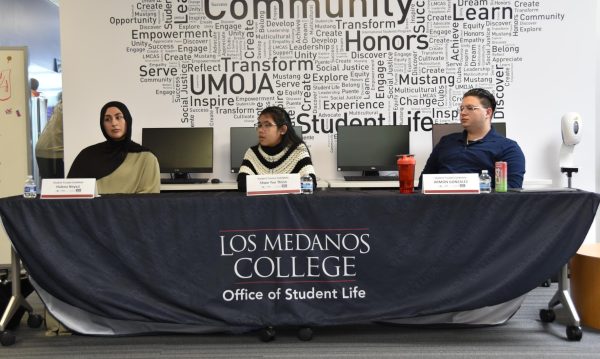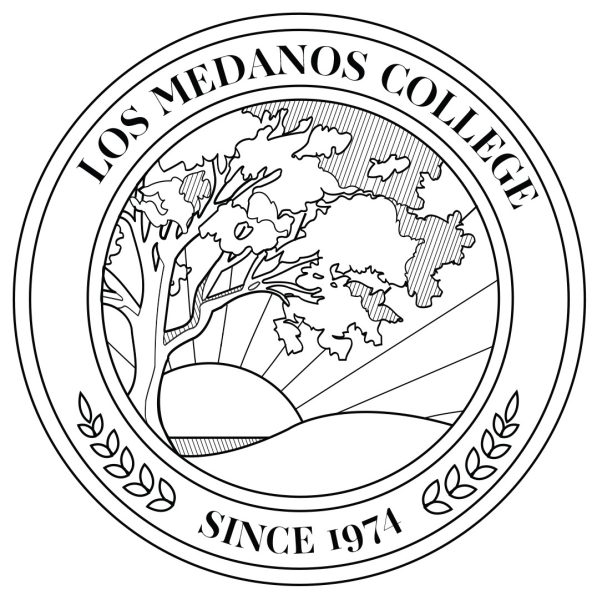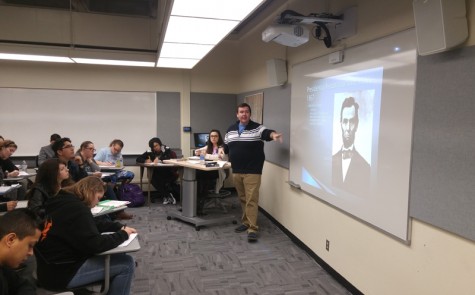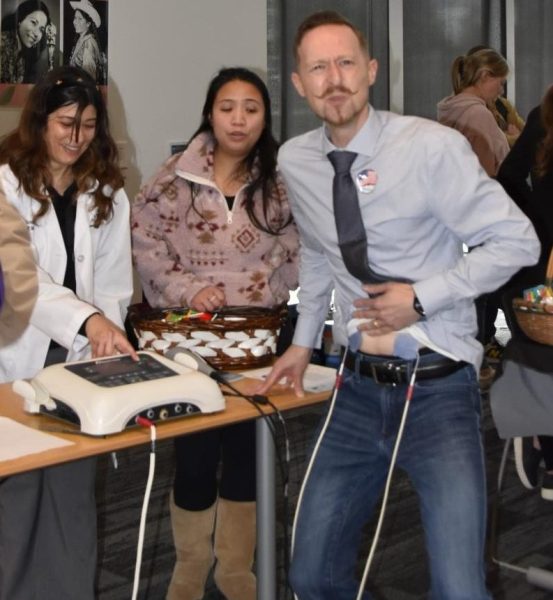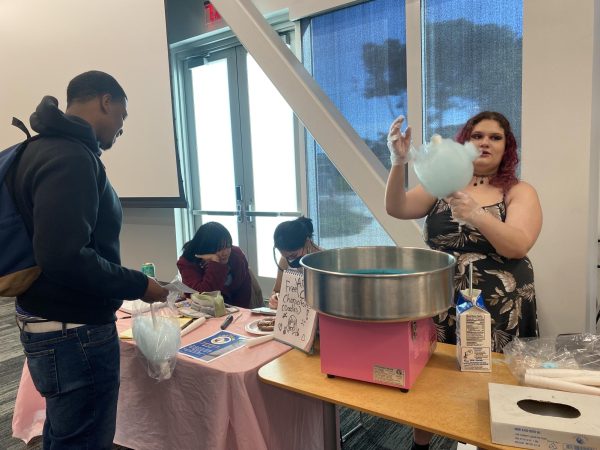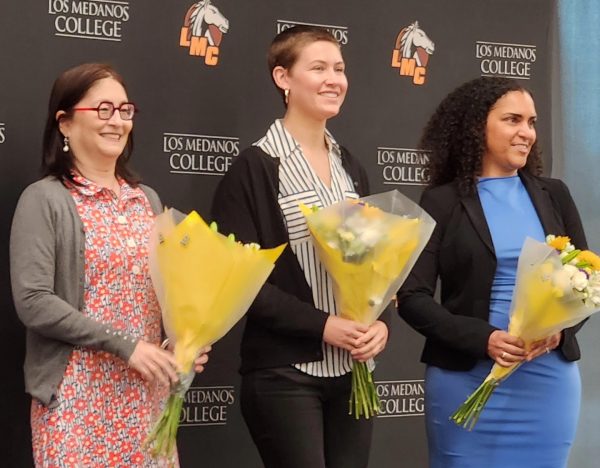The Impact of Equity: Artist spurs awareness
Artist Favianna Rodriguez during her lecture.
November 16, 2017
“Marriage equality, immigration, marijuana, the right to choose, as an artist I care about these kinds of events,” said Favianna Rodriguez before a crowd of LMC students. Rodriguez’s art reflects politics, culture, economics and the ties between them.
Rodriguez, the child of two Peruvian immigrants who grew up in the Fruitvale neighborhood of Oakland, has been immersed in diverse cultures, political activism and environmental issues her entire life.
Much of Rodriguez’s art revolves around immigration, including her “Migration is Beautiful” series, which has become symbolic of the struggle around DACA, Trump’s proposed border wall, and undocumented rights in general.
Rodriguez applauded LMC’s status as a sanctuary campus, as explained by Interim Student Equity Plan Coordinator Eric Sanchez.
“LMC will not cooperate with ICE,” said Sanchez. “We really try to protect your privacy, your family’s privacy.”
Rodriguez responded saying, “I’m excited that you are a sanctuary campus.”
Sanchez’s statements echoed Rodriguez’s art. One key element of Rodriguez’s art is the butterfly motif, connecting the migratory patterns of the monarch butterfly with undocumented individuals and drawing attention to the artificial nature of borders.
“Butterflies do not care about borders,” said Sanchez. “Borders are not natural, they are manmade and designed to separate us.”
Rodriguez commented that rather than accuse Mexico of job stealing, the United States should instead apologize for the raping of the country and the subjugation of its people.
Rodriguez went on to explain the importance of symbols and how they can catalyze social change.
“As a visual artist, symbols are important,” she said, singling out the 1969 photo of the earth taken from space as an example of a powerful symbol.
“This symbol is not even 50 years old but has impacted our culture,” said Rodriguez, drawing attention to the fact that the first Earth Day took place just one year after the iconic image was taken.
She also mentioned #BlackLivesMatter and Occupy Wall Street’s ‘99 percent’ as strong motivators for social change, becoming points that created conversation and brought issues to the forefront of society.
Rodriguez also brought together the issues of environment, race, and economics to show how deeply connected they really are.
“If you look at a map of air pollution you can see that the most affected areas are largely poor communities and communities of color,” said Rodriguez. “Natural disasters like Puerto Rico reinforce that.”
Another issue that Rodriguez’s art referenced heavily was sex positivity and sexual pleasure. Several of her pieces feature a clitoris.
“There is a lack of knowledge about vaginal pleasure and masturbation,” said Rodriguez. “Too few people realize that the clitoris is the point of sexual pleasure.”
Rodriguez continued on connecting rape culture to sexual shame and silence.
“Rape culture worsens when there is silence around sex,” she said. “That silence leads to societal rot and abuse… saying no to rape culture means saying yes to open, honest discussion.”
Rodriguez’s art can be viewed in the California Museum in Oakland where her work is displayed as part of “Arte y Almas” exhibit that will run until Dec. 30.

